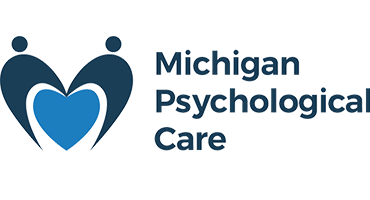What is Self-Harm? (Self-Harm Awareness Month)
Self-harm is a destructive behavior that involves a person hurting themselves on purpose. This is a dangerous behavior that can lead to serious consequences and, in extreme cases, death. In most cases, when a person is self-harming, they do not intend for it to end their life. However, it can still occur depending on the degree of self-harm the person is engaging in. It’s important to educate yourself and spread awareness of self-harm to help those who struggle with it.
Why Do People Self-Harm?
For someone who has never experienced self-harm, it may be hard to understand why someone would want to hurt themselves. However, when people engage in self-harm it’s usually for a specific reason. Some of the reasons people self-harm are:
- One of the main reasons that people engage in self-harm is underlying mental health conditions. When a person is struggling with their symptoms of mental illness, they may be more likely to engage in self-harm behaviors. This is because the person struggling doesn’t have ways to cope with their illness so they resort to harming themselves in some way.
- Some forms of self-harm come when a person struggles to process their emotions. By engaging in self-harm, they can relieve their negative feelings in a way. In this case, their self-harm likely started as a means to cope with difficult things going on in their lives. In some ways, the person engaging in self-harm is getting relief from their emotions through their behaviors.
- Other forms of self-harm can involve feelings of self-punishment. When someone engages in self-harm, they might be trying to punish themselves for something they believe they did wrong. They might feel like they deserve to be in pain physically and mentally. This type of self-harm can also come up when a person is angry at themselves for whatever reason.
- When a person experiences trauma or abuse, they may be more likely to engage in self-harm. This is especially true when the person does not process or get help for their trauma.
- Isolation can also play a role in determining the likelihood of a person self-harming. When someone is isolated from their family or peers, they may feel like they don’t belong or have a place in the world.
- When a person is experiencing pain but has a hard time expressing this to others, they may be at risk for self-harm. This is because some people believe if they engage in self-harm and someone in their lives notices it they will know that they need help. This may not be a conscious decision but rather a cry for help from someone who doesn’t know how to ask for it.
Signs of Self-Harm
It’s important to educate ourselves on the signs of self-harm in case someone in our lives struggles with it. You may also notice these signs in strangers, however, it’s more likely that you would notice them with people that you engage with often.
- Physical signs of injury (bruises, cuts, etc.)
- Wearing clothes that cover all parts of the person’s body
- Engaging in isolation from peers, friends, and family
- Changes in mood or behavior
- Critical self-talk or self-hatred
- Struggles with mental health illnesses
- Behaviors or expressions of low self-esteem
Treatment for Self-Harm
- Therapy: Therapy can be an incredible tool in recovery from self-harm. Therapists can help their patients struggling with self-harm in a variety of ways. The first step in therapy for self-harm is figuring out what might be causing it. There can be several different causes or triggers depending on the person and their history. Therapists will help their patients explore the different areas in which self-harm is affecting their lives and bring awareness to their behaviors. Through this, the therapist and patient can identify how to move forward with their recovery. The therapist will then try to teach the patient other ways that they may cope with their distressing feelings or situations. These coping skills will help the patient decrease their self-harm behaviors over time. Once the person is engaging in less (or hopefully none) of their self-harm symptoms they can start working on the underlying issues that might have led to their self-harm. This could mean addressing underlying mental health conditions, low self-esteem, or beliefs, and how they regulate their emotions.
- CBT Techniques: One of the most common approaches to therapy is called Cognitive Behavioral Therapy (CBT). This type of therapy teaches people how their thoughts, feelings, and behaviors all interact. CBT also teaches that many people’s thoughts are made of distortions and are not helpful. Through this form of therapy, patients can learn to identify which of their thoughts are not helpful and develop more realistic thoughts. In the realm of self-harm, a patient could use CBT to challenge the negative thoughts they have about themselves. By reframing these thoughts to be more compassionate, the patient can learn to be kinder to themselves. This will help them decrease any self-harm behaviors they are engaging in.
Additional Helpful Remedies
- Journaling: Journaling can be a helpful tool when someone is dealing with self-harm. They can journal about how they are feeling instead of engaging in self-harm behaviors. Journaling can also be a way for people struggling with self-harm to challenge their negative thoughts as we mentioned above.
- Meditation and mindfulness: Meditation and mindfulness can be practiced to help people struggling with self-harm stay in the present moment. Guided meditation can be a great way to introduce this practice. There are many free meditations online that are directed towards a variety of concerns.
- Online support: Online support in the form of crisis hotlines and support groups can be helpful for people struggling with self-harm. For example, Crisis Text Line offers texting and chat features for people struggling who might not have other support options. In addition to this, there is the 988 Lifeline available for people who need support. Oftentimes when someone is dealing with self-harm, they will isolate themselves from people who can help them. However, support can be life-changing and there are free resources available to all who need them.
Self-harm is a serious behavior that involves a person injuring themselves on purpose. In most cases, the person engaging in self-harm does not intend to end their life. Rather they are inflicting pain because they feel they deserve it or because they don’t have another way to express how they are feeling. These behaviors can be incredibly isolating and dangerous if not treated. March is self-harm awareness month and allows us to educate about these dangerous behaviors. If you or someone you love may be struggling with self-harm, we want to assure you that there is help available for you. We understand how hard it can be to seek help for self-harm. But we also know that treatment can be lifesaving. We want to spread this message to as many people as possible.
If you are interested in diving deeper into your healing journey and would like to work with our practice, you can reach out to us here.
References
https://www.health.harvard.edu/blog/cutting-and-self-harm-why-it-happens-and-what-to-do-202305312940
https://www.crisistextline.org/topics/self-harm/
https://my.clevelandclinic.org/health/diseases/12201-self-harm
https://www.mentalhealth.org.uk/explore-mental-health/publications/truth-about-self-harm
https://pmc.ncbi.nlm.nih.gov/articles/PMC7480822
Keywords: self-harm, mental illness, CBT, therapy


